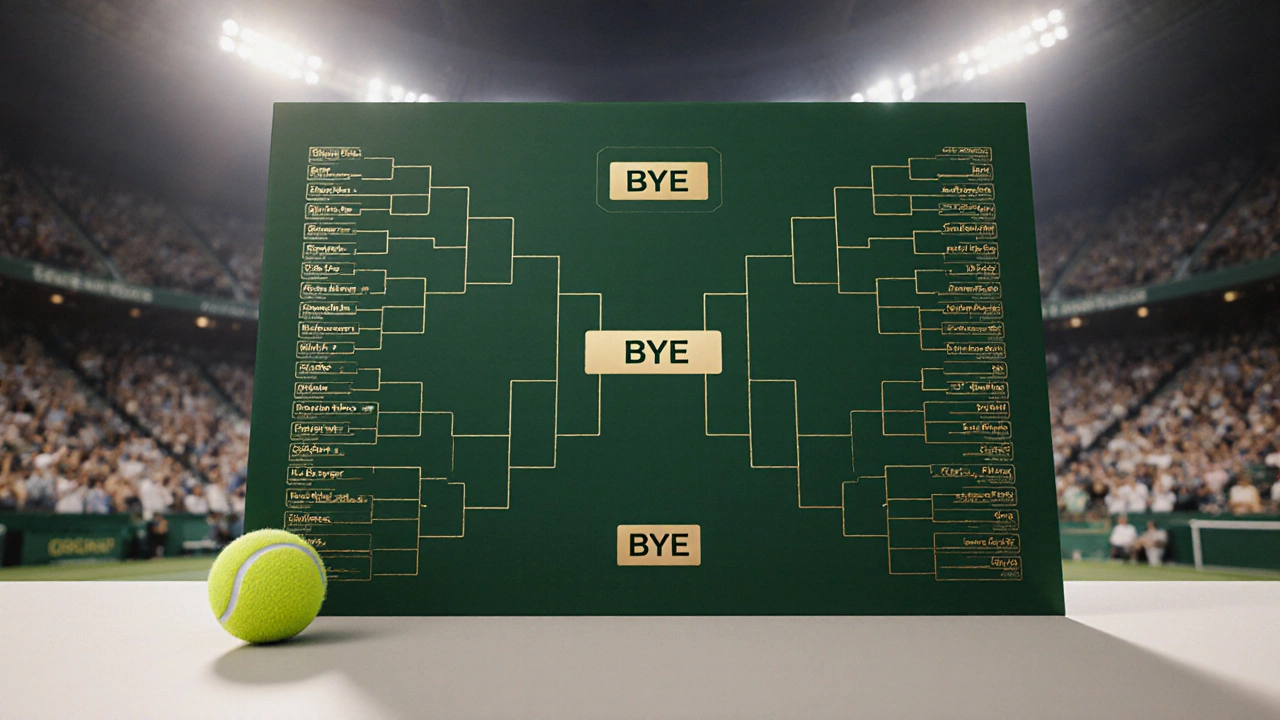Bye in Tennis: What It Means and How It Works
When you see bye in tennis, a tournament scheduling shortcut that lets a player skip the first round without playing. It’s not a gift—it’s a result of how many players enter and how the draw is structured. Think of it like a free pass in a bracket, but one that only goes to certain players based on rankings, not luck. You’ll find byes in almost every professional tennis tournament, from Grand Slams to smaller ATP and WTA events, and they play a quiet but powerful role in how the season unfolds.
Byes aren’t given out randomly. They’re tied directly to tennis seeding, the system that ranks players before a tournament to avoid top players meeting too early. If there are 64 spots in a draw but only 56 players sign up, the eight highest-ranked players get byes. That means they don’t play in Round 1—they start in Round 2, saving energy and reducing injury risk. This system keeps the tournament balanced. Without byes, lower-ranked players would face top seeds too soon, making the event less competitive and less exciting for fans.
It’s not just about fairness. Byes also affect tennis tournament structure, the way matches are organized across rounds to fit time, TV slots, and player recovery. A 128-player draw is clean—everyone plays. But when numbers drop, organizers need a way to keep the bracket intact. Byes fill the gaps. Players who get them often have a physical edge—they’ve had extra rest, avoided early fatigue, and can focus on their next opponent instead of recovering from a tough first match. That’s why top players fight to be seeded high: it’s not just about avoiding early losses, it’s about controlling their path through the tournament.
Byes also reflect how tennis rankings, the official system that orders players based on points earned over the past year shape real-world competition. A player ranked 15th might get a bye in a 64-player draw, while someone ranked 20th doesn’t. That one spot can mean the difference between a smooth run to the quarterfinals and a grueling three-set battle just to get started. Fans might not notice byes on the scoreboard, but players feel them in their legs and their strategy.
There’s no magic to a bye—it’s just math meeting sport. But that math has real consequences. It changes how players prepare, how coaches plan, and even how broadcasters schedule matches. And while you won’t see a bye listed as a win on the stats sheet, it’s still a win in the bigger picture: less wear and tear, more control, and a better shot at the title.
Below, you’ll find real examples and breakdowns from past tournaments that show exactly how byes shape outcomes, who benefits most, and why they’re far more important than they look.
What Is a Bye in Tennis? Understanding Tournament Draw Mechanics

A bye in tennis lets top-ranked players skip the first round of a tournament when the draw doesn’t have enough players. It’s a structural tool to keep brackets balanced, not a reward. Here’s how it works, who gets it, and why it matters.
